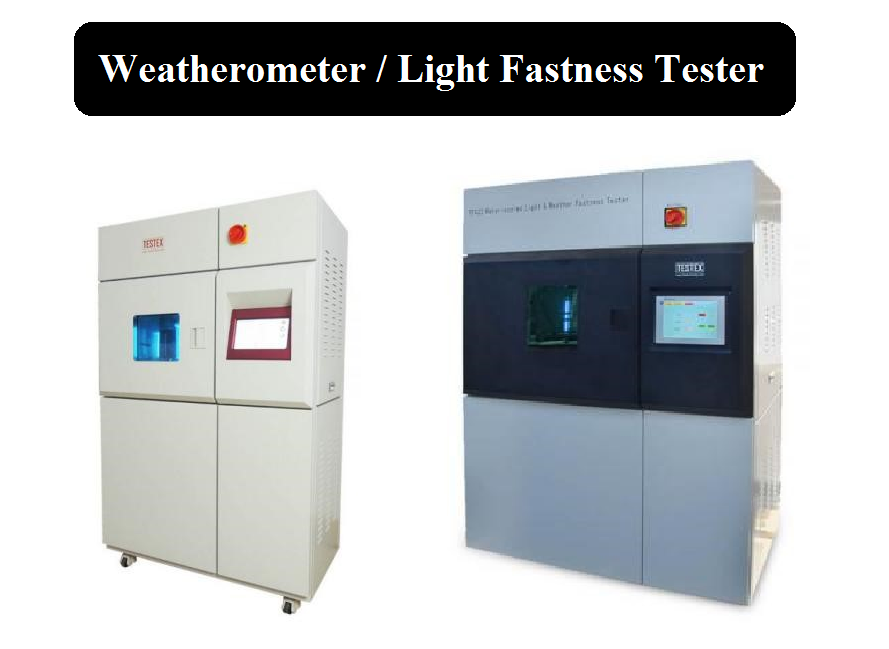Color Fastness to Light Test Methods
The color fastness of textiles refers to the fading degree and staining degree of textile color in the process of processing and use. The photo-fading principle of textile dyes is very complex: the structure of the dye is destroyed mainly because the dye absorbs photons, is stimulated, and a series of photochemical reactions occur, which result in a color fades. The colorfastness to light of textiles mainly depends on the chemical structure of the dye, as well as its aggregation state, combination state, and mixed color matching. Today we discuss the Color Fastness to Light Test Methods and 3 Ways to Improve textiles.

Comparison of Test Methods for Color Fastness to Light
Textiles are usually exposed to light when it is used, the light energy extinguishes the dye and leads to the familiar “fading” of colored textiles, which generally becomes lighter and darker, and some of them will also appear the color light change. If you want to know more about the light fastness test, you can check out Light Weather Fastness Tester.
Common Method of Light Fastness Test
- ISO 105 test method (ISO 105 B01, ISO 105 B02, ISO 105 B04, ISO 105 B06, etc.)
- AATCC 16 – Test Method by Light Source Type
ISO 105 Test Method
Method 1: Control the exposure period by checking the blue wool reference, each sample shall be equipped with a set of blue wool reference, which is generally used in the case of a dispute.
Method 2: Control the exposure period by inspection of the blue wool references, a batch of different samples only needs one set of blue wool reference, which can save the blue wool reference.
Method 3: This method used to check whether the sample is consistent with a known performance specification. The sample only needs to be equipped with two pieces of blue wool reference according to the requirements, and the exposure cycle is also controlled by the inspection of the blue wool references.
Method 4: This method used to check whether one or more samples conformity with an agreed-upon reference sample. The basic feature is the control of the exposure period by inspection of the agreed-upon reference sample. It is permissible to expose the specimens with the reference sample only and without the presence of blue wool references.
Method 5: This method is suitable to check conformity to agreed-upon radiant energy levels. It is allowed to expose the samples alone or with blue wool references. The specimens should be exposed until the specified amount of radiant energy is reached.
AATCC 16 – Test Method by Light Source Type
Method 1: Xenon arc lamp, alternate light, and dark
Method 2: Xenon arc lamp, continuous light, a black-standard thermometer
Method 3: Xenon arc lamp, continuous light, a black-panel thermometer
The Technical Requirement’s Comparison of the Test Standard for Partial Colorfastness to Light
| Technical Requirement | ISO 105 B02 Method 3 | AATCC 16 Method 3 |
| Light source | Color temperature 5500K~6500K Xenon arc lamp | Xenon arc lamp |
| Cooling system | Air – cooled | Water – cooled | Water – cooled |
| Black-panel Temp / ℃ | — | 63±1 |
| Black-standard Temp / ℃ | 50 | — |
| Test chamber Temp / ℃ | — | 43±2 |
| RH in test chamber / % | Humidity control reference, 5 grade | 30±5 |
| Mode of light source | Continuous light | Continuous light |
| Filter | Infrared glass filter and window glass outer cover | Borosilicate glass inner, and transparent soda-lime glass outer |
| Radiation / W/m2 (wavelength of 300nm-400nm) | 4.2 | 48±1 |
| Radiation / W/m2 (wavelength of 420nm) | 1.1 | 1.10±0.03 |
| Blank fabric | Blue wool reference 1~8 | Blue wool reference L2~L9 |
| Covers | Impermeable material | Impermeable material |
How to Improve the Color Fastness to Light of Textiles?
Through research and practice, it is found that: Select the dye with good light fastness is the key to improve the colorfastness to light of textiles. The colorfastness to light of textiles is mainly dependent on the chemical structure, the aggregation state, the combined state and the mixture of the dye. Now we analyze how to improve the colorfastness to light from the dyes.
Select the Dye According to Fiber Properties and Textile Uses
- For the cellulose fiber textile, we should select the dye with better oxidation resistance.
- For the protein fiber, we should select the dye with a good anti-reducing property or a weakly oxidizing additive.
- For the other fibers, select the dyes according to the effect on fading.
Select the Dyes According to the Color Depth
The color fastness of reactive dye on cellulose fiber is proportional to the depth of the color dyed, that is to say, the darker the color is, the better the light color fastness is.
For example, when dyeing light-color varieties, we should select the dye with stable lightfastness. In addition, the addition of many finishing agents, such as softener and anti-wrinkle finishing agents, will also reduce the light fastness of the product. These fabrics should choose dyes that are not sensitive to finishing agents.
Select the Dyes with Good Light-resistant Stability and Compatibility for Color Combination
The fading properties of different dyes are different, and even the principle of photo fading is different. Sometimes, the presence of one dye sensitizes the fading of another dye.
When the color is the combination, we should choose dyes that will not sensitize each other, or even improve the light stability, which is particularly important when dyeing dark varieties such as black. If one of the three primary colors disappears too quickly, it will soon cause the dyed fiber or fabric to change color, and the faded dye residue will also affect the light stability of the other two dyes. Reasonably control the dyeing process, make the dye combine with the fiber fully, and avoid the residue of hydrolyzed dye and unfixed dye on the fiber as far as possible. This is an important method to achieve a stable colorfastness to light.
Because the light and climate are very complex in reality, it is very difficult to simulate the color lightfastness test. In order to get the results close to reality, the operators must master the test process skillfully and with the help of a stable Weather meter (Lightfastness tester).



Good Nigth.
Would you do me a favor please.
I need a quotation about this machine,
Light Fastness Tester, Color Fasteness.
I have a new customer that need this machine and accesories,
Best regards
Can you please help to us about how to improve the lurex (metallic fiber) fastness to light.
Apply a protective coating to the lurex fibers to create a barrier between the metallic layer and the surrounding environment. This coating can help shield the fibers from UV radiation and prevent direct contact with substances that may cause fading.